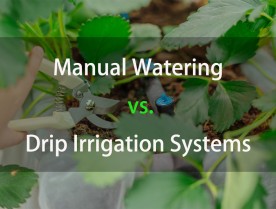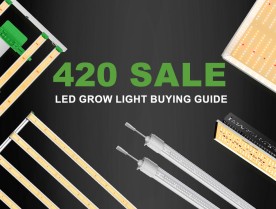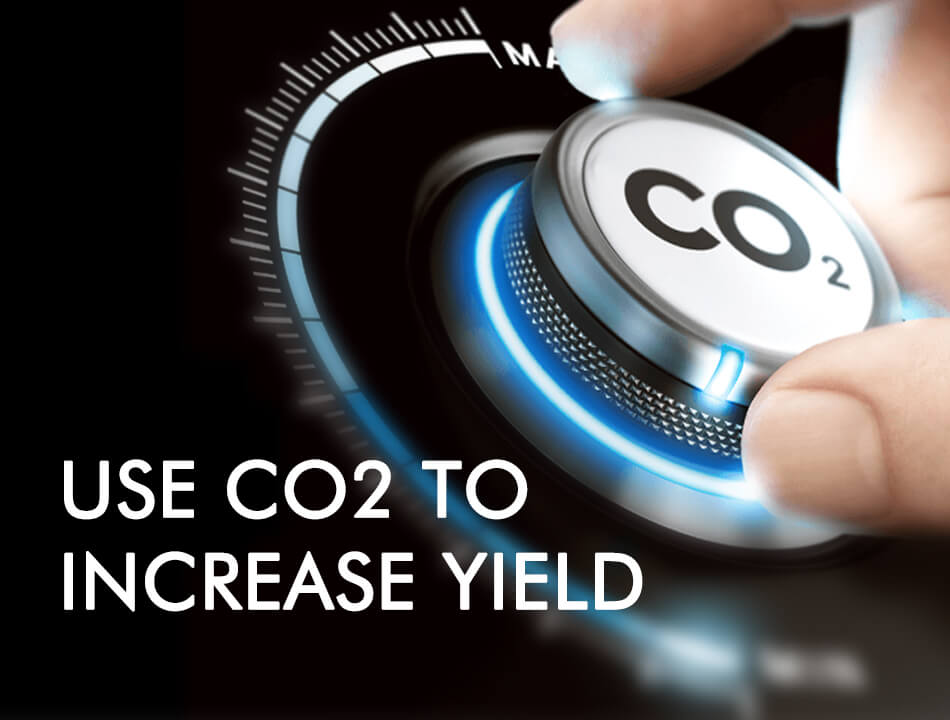
Since carbon dioxide (CO2) is essential in the process of photosynthesis, many cultivators assume that adding tons of CO2 is always a wise decision. While it’s true that supplemental CO2 can increase plant yields, there’s no guarantee this method will work. Extra CO2 only works in combination with other healthful growing habits. Plus, if you don’t have the right light intensity when adding CO2, you won’t notice any benefits from this element. Anyone thinking about growing weed with extra CO2 needs to know how to add this compound to their space to achieve the best results.
How Does CO2 Help Plants Grow?
As mentioned above, CO2 is a necessary part of photosynthesis. Green plants like weed need CO2, water, and light to create carbohydrates as “food” for growth. Without these three essential elements, plants wouldn’t have the strength or energy to mature. Plants that can’t access CO2 will only survive until they use up all of their stored sugars. Therefore, maintaining a steady stream of CO2 is essential for all plants.
While the atmospheric average of CO2 (i.e., 400 parts per million CO2) is enough for plants to grow, cultivators have noticed benefits from adding additional CO2 to their grow spaces. Increasing the available CO2 provides weed with extra nourishment, which often speeds up the growth process, prevents pests, and results in higher yields. Some cultivators notice the average growth speed for their plants increases by 20-100%, and the total crop yield could be 20-30% more than without CO2 supplementation.

When Should I Use CO2 In My Grow Room?
It’s best to start adding CO2 to a grow space when weed plants are in the mid-vegetative stage and the first 2-5 weeks in the flowering stage.
For most photoperiod strains, the ideal time to start using CO2 supplements is the third week into vegetation, while for most autoflowers, it is the second week.
Though vegetation is the primary growth stage when strains are the most receptive to CO2 during this period, it’s also recommended to continue using CO2 throughout the flowering phase for speedier growth, bigger buds, and potentially higher yields.
What’s The Ideal Amount Of CO2 For Plants?
The “ideal” amount of CO2 largely depends on a cultivator’s space requirements, budget, and goals. While it’s “best” to have ~ 1,500 ppm of CO2 from a growth perspective, cultivators will need to spend extra time, energy, and money building up the matching environment for this CO2 level. While 1,500 ppm of CO2 can produce the max yield and the fastest growing time for most weed strains, the costs of extra equipment and energy may not merit these greater harvests.
All cultivators agree that CO2 levels of 800 - 1,000 ppm are easy to achieve and manage while gaining the benefits of faster growth and greater yields from the increased carbon dioxide levels. However, we recommend prepared and professional growers raise the level to 1,500 ppm for the best balance of investment and outcome.
This is because most LED grow lighting solutions on the market are capable of high intensity of ~2,000 μmol/m²/s which is the matching light intensity for plants to handle 1,500 ppm of CO2. It is always our aim to leverage all available resources to increase returns.
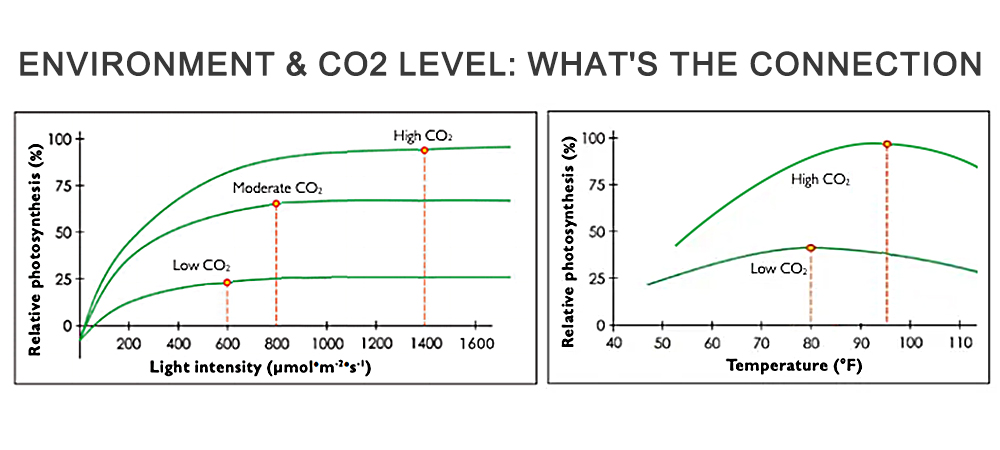
Light Intensity & CO2 Level
Even if you’re adding 1,500 ppm of CO2 to your grow room, your plants can’t absorb all of this CO2 if you don’t have the proper light setting. You need to increase your light intensity for weed to use the supplemental CO2 in your grow tent.
Light intensities of 200 - 300 μmol/m²/s in PPFD are only suitable for average atmospheric CO2 levels of 400 ppm. In other words, you won’t get any extra benefits from adding CO2 to your grow space if you keep your PPFD in this low range.
When adding CO2 to your grow room, most cultivators recommend keeping your PPFD and CO2 ppm scores equal. For instance, if you’re going to create an environment with 600 ppm CO2, make sure your grow light’s PPFD is at least 600 μmol/m²/s. Similarly, if you want to max out your growth potential with 1,500 ppm of CO2, you need grow lights that can achieve at least 1,500 μmol/m²/s.
As a rule of thumb, weed cultivators recommend setting your CO2 and PPFD levels as follows for the maximum benefits:
- Seedling Phase: provide your plants with 200 - 300μmol/m²/sPPFD, and simply with fresh air. The existing CO2 in the environment is enough and more will hurt the seedling’s growth.
- Vegetation Phase: strains will require 600 - 1,000 μmol/m²/s PPFDin this growth stage, and as you relatively increase the CO2 level to 600 - 1,000 ppm, the rate of photosynthesis will speed up amazingly. At this stage, the best fixed CO2 level is 1,000 ppm, however, a more acceptable CO2 level is 800 ppm for most tent growers.
- Flowering Phase: the ideal light intensity for flowering is 1,000 - 1,200 μmol/m²/s PPFDfor tent growers, so the relative CO2 level is 1,000 - 1,300 ppm.
- Ultimate conditions: During the flowering stage, you can increase the light intensity to 1,500 - 2,000 μmol/m²/sand the CO2 level to 1,500 ppm. Growers who have reached this level have recorded a 100% increase in plant growth.
According to the above data, maintaining the CO2 level at 1,000 ppm throughout the growth stages is the most convenient and budget for home growers. While for professional farmers, trying to achieve 1,000 ppm in the vegetation and handle the 1,500 ppm of CO2 in the flowering will gain the most.
Temperature & CO2 Level
When light intensity and CO2 concentration increase, the plant's tolerance to temperature increases correspondingly. Rather than tolerance, the plant needs high temperatures as a driving force for perfect photosynthesis in this case.
- In generalcondition(~400 ppm), the optimal growth temperature for weed is around 26- 27 °C (78 -80 °F).
- At high CO2 levels (over 1,000 ppm), the maximum receptive temperature is up to 36°C(96 °F), and at this temperature, the rate of photosynthesis peaks.
- In general, we believe that 30°C(86 °F) is the most ideal for both growth speed and management.
However, remember that precious terpenes will start evaporating at 26 °C(78 °F), so it’s not always good to keep temperatures beyond that level. Keeping your grow room cool is more beneficial when entering the 2nd half of the flowering season. Of course, the temperature control depends on your needs.
How To Calculate The CO2 You Need For Your Space
In addition to calculating your light intensity levels, cultivators need to take some time to figure out how much CO2 they can add to their space. This will help you make the best use of your grow area and figure out the average cost of CO2 per cubic foot.
The simplest way to gauge how much CO2 you can fit in your space is to use the following formula:
- Your grow space’s width(ft) x length (ft) x height (ft) x ideal CO2 levels in parts per million (ppm) = CO2 in cubic feet
To make this equation clearer, let’s run through an example. Suppose your grow room measures 8 x 8 x 7 ft, and you want to put 1,000 ppm of CO2 in your space. In this case, you would need to multiply 8 x 8 x 7 x 0.001 to get a figure of 0.448. In this example, you’ll need 0.448 cubic feet of CO2 to achieve your 1,000 ppm CO2 level.
The Best Ways To Apply CO2
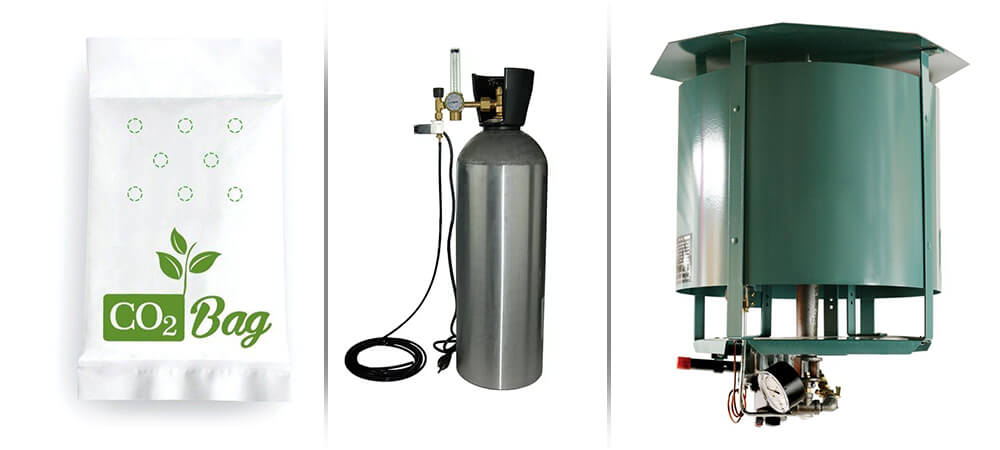
There are a few ways to add CO2 to your grow space, each of which is suitable for different areas and budgets.
Portable “CO2 bags” are only good in small grow tent environments. These inexpensive products typically contain substances like mycelium that naturally release CO2 once you open the bag. While these items are relatively cheap and easy to use, they won’t give off enough CO2 for a larger grow area.
CO2 tanks are the most versatile method for growing tents and small grow rooms. Similar to grow bags, CO2 tanks release CO2 into the atmosphere once you open them. However, the CO2 tends to spread further and penetrate deeper than a small CO2 bag. Due to their ease of use and high efficiency, CO2 tanks tend to be the most commonly used CO2 delivery method in cultivation circles.
CO2 generators are involved in large-scale commercial grows in your grow space. The main benefit of generators is that they will supply the highest quantity of CO2. However, since these generators use a flame to produce CO2, they require extra maintenance and energy costs. Also, you have to factor in the extra heat CO2 generators give off into your grow space.
Do Plants Take In CO2 At Night?
Without light, CO2 cannot penetrate your plants. At night, plants no longer carry out photosynthesis, but respiration as humans do, that is, inhaling oxygen and exhaling carbon dioxide. If we increase the concentration of carbon dioxide at this time, it is like blocking our nostrils in our sleep. Therefore, it makes no sense to add extra CO2 to your grow space during the night.
A Few Final Tips For Using CO2 To Grow Weed
As a final piece of advice, please remember that CO2 won’t “magically” make your weed grow faster and bigger. Like any good supplement, CO2 only works well when all other factors areaccordingly optimized. A lot of CO2 won’t be of benefit if your soil quality, watering schedule, and general cleanliness are off. Offering the matching environments and nutrients is vital when adding extra CO2 to your plant growth.
High-quality ventilation is also crucial to ensure the extra CO2 you’re adding gets evenly distributed throughout the canopy. Plus, plants need higher PPFD scores to absorb any excess CO2 in your space.
Cultivators should always focus on general gardening skills over monitoring CO2 levels. While adding CO2 has its benefits, it should never be the primary focus. Cultivators should only start experimenting with CO2 when they’re confident they have a handle on the basics.
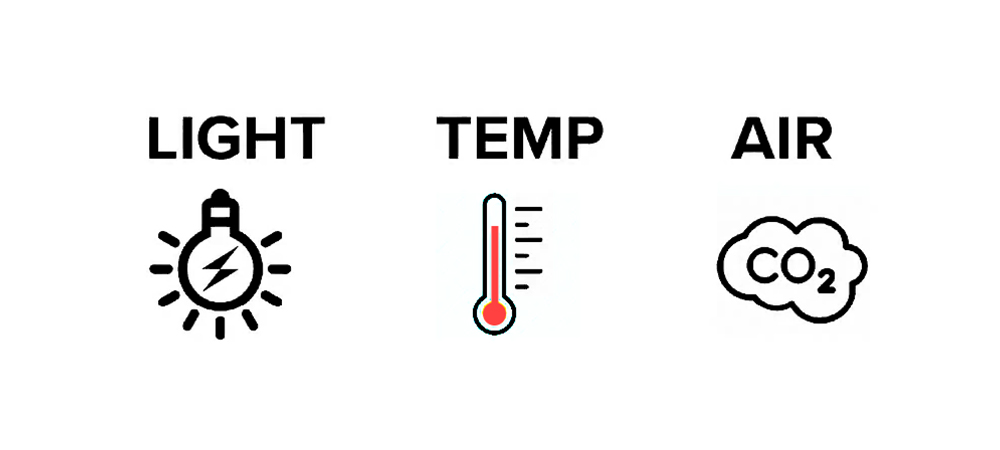
Mars Hydro Providing Matching Grow Lighting
As long as you utilize supplemental CO2 in your cultivation, high-intensity led grow lights are a must no matter what you are growing. For CO2 supplemental cultivation, Mars Hydro prepared three LED grow lights with qualified intensity to take full advantage of high levels of CO2 for perfect photosynthesis.
The FC8000 and FC-E8000 provide an average intensity of 1,400 μmol/m²/s, which is good if you plan to use 1000 ppm CO2 in your grow room.
The FC-E1000W provides the highest average intensity of 1800μmol/m²/s for farmers pursuing a 100% increase in photosynthesis rate and up to 30% increase in yield.
All 3 types of lights are dimmable, so they can easily match dynamic PPFD requirements throughout the plant growth cycle, whether they are used for vegetation or flowering. Check out Mars Hydro LED GROW LIGHTS COLLECTION for more plant lights to optimize your growing environment.


